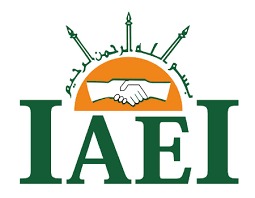Determinants of Customer Decisions to Save at Sharia Digital Banks
DOI:
https://doi.org/10.30983/es.v7i2.7608Keywords:
Saving Decision, Islamic digital banks.Abstract
Lembaga keuangan perbankan di Indonesia mengalami transformasi digital yang pesat namun tingkat penerimaan Masyarakat masih tergolong rendah. Penelitian ini bertujuan untuk mengungkapkan dampak variabel religiusitas, keamanan fintech, dan citra merek terhadap keputusan nasabah untuk menyimpan uang di bank digital syariah. Penelitian ini menggunakan data primer yang diperoleh melalui penyebaran kuesioner atau angket, melibatkan 100 responden yang dipilih berdasarkan perhitungan lemeshow. Metode analisis yang digunakan adalah uji validitas, reliabilitas, uji asumsi klasik, uji regresi linier berganda dan uji hipotesis dengan menggunakan perangkat lunak SPSS 24 untuk menganalisis data penelitian. Hasil penelitian menunjukkan bahwa secara parsial variabel keamanan fintech dan citra merek memiliki pengaruh yang signifikan (Sig. <0,005) terhadap keputusan nasabah untuk menabung di bank digital syariah, sementara variabel religiusitas tidak memiliki pengaruh signifikan (Sig. >0,005) terhadap keputusan nasabah untuk menabung di bank digital syariah. Temuan ini mendorong penelitian selanjutnya untuk mengeksplorasi faktor-faktor lain yang dapat memengaruhi keputusan nasabah dalam menggunakan layanan bank digital syariah. Sehingga mampu menjadi bahan evaluasi bagi industri bank digital syariah dalam meningkatkan pangsa pasar.
The banking and financial institutions in Indonesia have undergone rapid digital transformation; however, the level of public acceptance remains relatively low. This research aims to elucidate the impact of religiosity, fintech security, and brand image variables on customers' decisions to deposit money in Islamic digital banks. The study employs primary data obtained through the distribution of questionnaires, involving 100 respondents selected based on the Leveshow calculation. The analytical methods utilised include validity and reliability tests, classical assumption tests, multiple linear regression analysis, and hypothesis testing, all conducted using SPSS 24 software for data analysis. The results of the study indicate that, partially, fintech security and brand image variables exert a significant influence (Sig. <0.005) on customers' decisions to deposit money in Islamic digital banks. Meanwhile, the religiosity variable does not have a significant impact (Sig. >0.005) on customers' decisions to deposit money in Islamic digital banks. These findings propel further research to explore other factors that may influence customers' decisions to utilise Islamic digital bank services. Thus, it can serve as evaluative material for the Islamic digital banking industry to enhance market shareReferences
Aisyah, S., Harahap, M. I., Nurbaiti, N., & Rokan, M. K. (2023). The Factors Influencing Behavioural Intention Fintech Lending (Paylater) Among Generation Z Indonesian Muslims and Islamic Consumption Ethics Views. EKONOMIKA SYARIAH : Journal of Economic Studies, 7(1), Article 1. https://doi.org/10.30983/es.v7i1.6233
Alkhowaiter, W. A. (2020). Digital payment and banking adoption research in Gulf countries: A systematic literature review. International Journal of Information Management, 53, 102102. https://doi.org/10.1016/j.ijinfomgt.2020.102102
Alshater, M. M., Saba, I., Supriani, I., & Rabbani, M. R. (2022). Fintech in islamic finance literature: A review. Heliyon, 8(9). https://doi.org/10.1016/j.heliyon.2022.e10385
Aslam, E., Ashraf, M. S., & Iqbal, A. (2022). Impact of corporate image on customer loyalty of Islamic banks: The role of religiosity, collectivism, sight cues and CSR. Journal of Islamic Marketing, 14(5), 1310–1324. https://doi.org/10.1108/JIMA-09-2021-0314
Aziz, M. R. A. (2022). Digital Transformation Through Islamic Digital Banking For Financial Inclusion. Proceeding of International Conference on Science and Technology, 12–19. https://doi.org/10.36378/internationalconferenceuniks.v0i0.2818
Baber, H. (2020). FinTech, Crowdfunding and Customer Retention in Islamic Banks. Vision, 24(3), 260–268. https://doi.org/10.1177/0972262919869765
Berakon, I., Aji, H. M., & Hafizi, M. R. (2021). Impact of digital Sharia banking systems on cash-waqf among Indonesian Muslim youth. Journal of Islamic Marketing, 13(7), 1551–1573. https://doi.org/10.1108/JIMA-11-2020-0337
Chalke, A. S., Cheng, B. L., Idris, I., & Chin, J. X. (2023). Brand engagement in self-concept for influencer marketing: The role of product involvement as a moderator. E-Academia Journal, 12(1). https://doi.org/10.24191/e-aj.v12i1.21506
Chauhan, S., Akhtar, A., & Gupta, A. (2022). Customer experience in digital banking: A review and future research directions. International Journal of Quality and Service Sciences, 14(2), 311–348. https://doi.org/10.1108/IJQSS-02-2021-0027
Dewindaru, D., Syukri, A., Maryono, R. A., & Yunus, U. (2022). Millennial customer response on social-media marketing effort, brand image, and brand awareness of a conventional bank in Indonesia. Linguistics and Culture Review, 6, 397–412. https://doi.org/10.21744/lingcure.v6nS1.2068
Fajri, M. Z. N., Lahuri, S. bin, Umam, K., Rusydiana, A. S., Mujahidah, A. S., Assalafiyah, A., Riani, R., Haidar, A., Herindar, E., Novitasari, F. S., Masrifah, A. R., Afif, M., Sa’diah, Z., Afifah, H. N., urrosyidin, M. S., Maulana, H., Harahap, S. A. R., Rizkiya, M. A., Rosmitha, S. N., … Suminto, A. (2022). Islamic Fintech: (Present and Future). Unida Gontor Press.
Hasib, F. F., Hantoro, R. T., Maulidiyah, D. R., Nilasari, W. A., & Hambali, R. W. (2023). ANALYSIS OF INTENTION TO USE ON ISLAMIC DIGITAL BANK IN INDONESIA. I-iECONS e-Proceedings, 570–591. https://doi.org/10.33102/iiecons.v10i1.36
Hidayat, A., & Kassim, S. (2023). Prioritization of the Digital Banking Services in Islamic Banking. In A. Hamdan, A. Harraf, A. Buallay, P. Arora, & H. Alsabatin (Eds.), From Industry 4.0 to Industry 5.0: Mapping the Transitions (pp. 969–985). Springer Nature Switzerland. https://doi.org/10.1007/978-3-031-28314-7_82
Himawan Sardju, Indrianawati Usman, & Sri Wahyuni Astuti. (2023). The Identity Of Loyalty To The Surabaya Hero Museum In East Java. JBMP (Jurnal Bisnis, Manajemen Dan Perbankan), 9(1), 1–11. https://doi.org/10.21070/jbmp.v9i1.1665
Johar, R. S., & Suhartanto, D. (2019). The Adoption of Online Internet Banking in Islamic Banking Industry. IOP Conference Series: Materials Science and Engineering, 662(3), 032032. https://doi.org/10.1088/1757-899X/662/3/032032
Kaur, G., Habibi Lashkari, Z., & Habibi Lashkari, A. (2021). Understanding cybersecurity management in FinTech: Challenges, strategies, and trends. Springer.
King, T., Stentella Lopes, S., Srivastav, A., & Williams, J. (Eds.). (2021). Disruptive technology in banking and finance: An international perspective on FinTech. Palgrave Macmillan. https://doi.org/10.1007/978-3-030-81835-7
Mardiana, E., Thamrin, H., & Nuraini, P. (2021). Analisis Religiusitas Terhadap Minat Menabung Di Bank Syariah Kota Pekanbaru. Jurnal Tabarru’: Islamic Banking and Finance, 4(2), 512–520. https://doi.org/10.25299/jtb.2021.vol4(2).8309
Miftahuddin, M., Triyoko, H., Habibi, B. Y., & Iqdami, M. N. (2022). Religious Psychosocial Healing for the Trauma of the Children of the Terrorists. QIJIS (Qudus International Journal of Islamic Studies), 10(2), 319. https://doi.org/10.21043/qijis.v10i2.14661
Nangin, M. A., Barus, I. R. G., & Wahyoedi, S. (2020). The Effects of Perceived Ease of Use, Security, and Promotion on Trust and Its Implications on Fintech Adoption. Journal of Consumer Sciences, 5(2), Article 2. https://doi.org/10.29244/jcs.5.2.124-138
Nicoletti, B. (2021). Banking 5.0: How fintech will change traditional banks in the ‘new normal’ post pandemic. Palgrave Macmillan. https://doi.org/10.1007/978-3-030-75871-4
Nur, Y., Basalamah, S., Semmail, B., & Hasan, S. (2023). The Influence of Bank Image, Accessibility, and Customer Relationship Management on Customer Satisfaction and Loyalty at Islamic Banks in Makassar City. International Journal of Professional Business Review, 8(9), e03640–e03640. https://doi.org/10.26668/businessreview/2023.v8i9.3640
Nurhayati, N. (2018). Memahami Konsep Syariah, Fikih, Hukum dan Ushul Fikih. Jurnal Hukum Ekonomi Syariah, 2(2), Article 2. https://doi.org/10.26618/j-hes.v2i2.1620
Pontoan, M. C., SIhotang, J. I., & Lompoliu, E. (2023). Information Security Analysis of Online Education Management System using Information Technology Infrastructure Library Version 3. MATRIK : Jurnal Manajemen, Teknik Informatika Dan Rekayasa Komputer, 22(2), 207–216. https://doi.org/10.30812/matrik.v22i2.2474
Rahima, A. (2020). Peluang dan Tantangan Perbankan Syariah Terhadap Pembiayaan Pemilikan Properti Residensial di Indonesia. JESI (Jurnal Ekonomi Syariah Indonesia), 10(1), Article 1. https://doi.org/10.21927/jesi.2020.10(1).1-10
Riyadi, S. (2021). The Effects of Image, Brand and Quality on Customer Loyalty of Sharia Banking. The Journal of Asian Finance, Economics and Business, 8(3), 1315–1325. https://doi.org/10.13106/jafeb.2021.vol8.no3.1315
Rohmad, Rivaldo, Y., Kamanda, S. V., & Yusman, E. (2022). The Influence Of Brand Image, Promotion And Trust On Customer Loyalty At Bank BSI Nagoya Batam Branch. Jurnal Mantik, 6(2), Article 2. https://doi.org/10.35335/mantik.v6i2.2810
Rosyadah, P. C., Arifin, N. R., Muhtadi, R., & Safik, M. (2020). Factors That Affect Savings In Islamic Banking. AL-ARBAH: Journal of Islamic Finance and Banking, 2(1), Article 1. https://doi.org/10.21580/al-arbah.2020.2.1.5499
Rusmahafi, F. A., & Wulandari, R. (2020). The Effect of Brand Image, Service Quality, and Customer Value on Customer Satisfaction. International Review of Management and Marketing, 10(4), Article 4.
Saba, I., Kouser, R., & Chaudhry, I. S. (2019). FinTech and Islamic Finance-Challenges and Opportunities. Review of Economics and Development Studies, 5(4), Article 4. https://doi.org/10.26710/reads.v5i4.887
Salim, F., Arif, S., & Devi, A. (2022). Pengaruh Literasi Keuangan Syariah, Islamic Branding, dan Religiusitas terhadap Keputusan Mahasiswa Dalam Menggunakan Jasa Perbankan Syariah. El-Mal: Jurnal Kajian Ekonomi & Bisnis Islam, 3(2), Article 2. https://doi.org/10.47467/elmal.v3i2.752
Sari, D. N., Siswanto, S., Maksum, I., Abdani, F., Khan, R. B. F., Retnasih, N. R., Setiani, S., & Masyhuri, M. (2023). Determinant Of Consumer Decision On Islamic Banking. EL DINAR: Jurnal Keuangan Dan Perbankan Syariah, 11(1), Article 1. https://doi.org/10.18860/ed.v11i1.17736
Shaikh, I. M., Amin, H., Noordin, K., & Shaikh, J. M. (2023). ISLAMIC BANK CUSTOMERS’ ADOPTION OF DIGITAL BANKING SERVICES: EXTENDING DIFFUSION THEORY OF INNOVATION. Journal of Islamic Monetary Economics and Finance, 9(1). https://doi.org/10.21098/jimf.v9i1.1545
Shiliha, E. (2022). PENGARUH PANDANGAN ISLAM, PELAYANAN DAN KEAMANAN TERHADAP MINAT NASABAH UNTUK MENABUNG DI BANK SYARIAH ISLAM (BSI) CABANG LAHAT. MOTIVASI, 7(1), 15. https://doi.org/10.32502/mti.v7i1.4497
Singh, S., & Srivastava, R. K. (2020). Understanding the intention to use mobile banking by existing online banking customers: An empirical study. Journal of Financial Services Marketing, 25(3), 86–96. https://doi.org/10.1057/s41264-020-00074-w
Sinta, S., & Sukaris, S. (2021). INFLUENCE OF PERCEPTION OF EASE, SECURITY, AND FEATURES ON DECISION TO USE DIGITAL WALLET GOPAY. Journal Universitas Muhammadiyah Gresik Engineering, Social Science, and Health International Conference (UMGESHIC), 1(2), 898. https://doi.org/10.30587/umgeshic.v1i2.3492
Siska, E. (2022). Exploring the Essential Factors on Digital Islamic Banking Adoption in Indonesia: A Literature Review. Jurnal Ilmiah Ekonomi Islam, 8(1), 124. https://doi.org/10.29040/jiei.v8i1.4090
Suparno, D., Tjahjawulan, I., Martodiryo, S., Anshary, A., Mulyono, M., Badrian, B., Indrariani, E., & Suwondo, T. (2023). The influence of financial literacy, digital literacy, digital marketing, brand image and word of mouth on the z generation’s interest in Islamic banks. International Journal of Data and Network Science, 7(4), 1975–1982.
Tran, N. A. (2021). Intention to Use Digital Banking Services of Young Retail Customers in Vietnam. The Journal of Asian Finance, Economics and Business, 8(8), 387–397. https://doi.org/10.13106/jafeb.2021.vol8.no8.0387
Usman, H., Mulia, D., Chairy, C., & Widowati, N. (2020). Integrating trust, religiosity and image into technology acceptance model: The case of the Islamic philanthropy in Indonesia. Journal of Islamic Marketing, 13(2), 381–409. https://doi.org/10.1108/JIMA-01-2020-0020
Wahyoedi, soegeng. (2022). Loyalitas Nasabah Bank Syariah. CV adinu abi mata.
Wardana. (2020). Pengantar Aplikasi SPSS Versi 20. LPPM Universitas Muhammadiyah Buton Press.
Yussaivi, A., Suhartanto, D., & Syarief, Moch. E. (2020). An Analysis of the Determining Factors of Mobile Banking Adoption in Islamic Banks. IOP Conference Series: Materials Science and Engineering, 879(1), 012174. https://doi.org/10.1088/1757-899X/879/1/012174
Downloads
Submitted
Accepted
Published
Issue
Section
License
Authors who publish with this journal agree to the following terms:
- Authors retain copyright and grant the journal right of first publication with the work simultaneously licensed under a Creative Commons Attribution-ShareAlike 4.0 International License that allows others to share the work with an acknowledgment of the work's authorship and initial publication in this journal.
- Authors are able to enter into separate, additional contractual arrangements for the non-exclusive distribution of the journal's published version of the work (e.g., post it to an institutional repository or publish it in a book), with an acknowledgment of its initial publication in this journal.
- Authors are permitted and encouraged to post their work online (e.g., in institutional repositories or on their website) prior to and during the submission process, as it can lead to productive exchanges, as well as earlier and greater citation of published work (See The Effect of Open Access).











